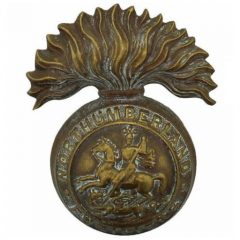Friday, 24th May 1918
The 4th Bn assumed control of the forward defence positions in the sector allocated to the 149th Bde. Two Coys moved into the forward outposts, one Coy into the first line trenches along Route 44 and the remaining Coy into Trench de la Plaine. The 6th Bn were placed in Support with two Coys in Trench de la Redoubte and Trench Dardanelles, one Coy in Trench Epinal and the remaining Coy co-located with Bn HQ at P.C. Kleber. The relief was complete by 3am on the 25th.
Monday, 27th May 1918
At 1am the enemy put down an extraordinarily intense barrage consisting of high explosive and gas along the whole of the forward area. All the troops were 'stood to' at their battle positions, but this resulted in many casualties on account of the shelling.
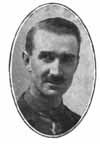
'the whole front from Soissons to Reims broke into flame, and we knew that for the third time in ten weeks we were up against the real thing. Within fifteen minutes it was obvious that the Hun had an extraordinary concentration of guns of every calibre, and that his bombardment had been organised beforehand in most thorough and accurate fashion. A big proportion of gas was used, about four varieties being distinguished in the later French and British reports. The whole line was deluged with shells, and the front trenches especially must have been reduced to a pulverised mass.[zotpressInText item="{NH3TRT6B,57}"]
At 3.45am an attack developed along the entire line with the enemy advancing towards the 4th Bn positions from behind the Ouvrage De La Carriere, in a south easterly direction running almost parallel with Route 44. Fusiliers from the two Coys manning the outposts, who survived the bombardment, withdrew to the line of posts that constituted the real front line on the reverse slope, where Lewis gun and rifle fire broke up the attack and drove the enemy back.
The attack was soon renewed, because at 4am German infantry reformed behind four tanks and broke through the line of posts on the right flank of the Bn, near Butte de Margrave, and advanced towards the Battle line held by "D" Coy and two Coys from the 6th Bn. The German advance was so rapid, the forward Coy on the left flank withdrew to discover that the enemy was already behind them in Butte de Siegfried. The Bn War Diary records that very few men from this Coy were seen again.
At 4.15am the 'Battle line' came into action. By this time virtually all the allied artillery had been silenced and was no longer effective in assisting the infantry. Brave resistance was offered on the Battle Line, but by 4.45am the enemy tanks turned and overwhelmed the right flank of the line near Ville Au Bois and positions held by the 23rd Bde, resulting in the loss of the trenches and the two Coys from the 6th Bn who were in them.
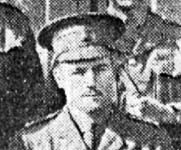
Behind them, in the Battle Zone, lay four small French redoubts, including Centre Marceau, occupied by 4th and 6th Bn HQs and the two remaining coys from the 6th Bn. The remnants of ‘D’ Coy (Capt Allen) and Bn HQ (Lt Col. B.D. Gibson), about forty men in all, withdrew to Centre Marceau. From here a telephone link was established with Bde HQ at Centre de Evreux. In the last message transmitted at 5am, Lt Col. Gibson informed the Brigadier that he was holding out with his HQ and about forty men.
By 5.30am the line of redoubts had been outflanked from the right and the Centre Marceau was attacked in force from the right, the front and the rear. They held out for sometime, but the survivors finally withdrew to the Butte De L’Edmond, a post where all four machine guns had been knocked out by the bombardment. They joined a party from the Divisional MG Bn and made a further stand, but Lt Col. Gibson was killed by a shot through the head, while organising the last defences.
‘Thus the Battalion lost its Commanding Officer – a man revered and loved by all. All nerve and will, he died fighting to the last, the very incarnation of courage. A born leader and a superb soldier, he had joined in the early Volunteer days, finally becoming Commanding Officer in the summer of 1915. His name will be ever remembered by those who knew him as one of the straightest, strongest men we have known’.[zotpressInText item="{NH3TRT6B,57}"]
At 5.15am Brigadier Gen. Riddell ordered the 5th Bn (held in reserve at Pontavert in the Aisne valley), to send two Coys forward to reinforce the Battle Zone. The message did not arrive until 6.10am, by which time one of the redoubts and the Butte de L'Edmond were already in enemy hands, so inevitably the fusiliers were subjected to heavy fire and unable to make headway. The other redoubts held out much longer; but finally all were surrounded and captured. From this time the 4th and 6th Bns ceased to exist as fighting units.
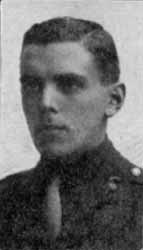
A few fusiliers were able to escape and joined others from the 149th Bde retreating along the canal bank from Pontavert, towards Concevreux. The 4th Bn administrative and transport coys were in Concevreux, along with Major Robb (Bn 2 i/c), Capt Turner and Lt Goodbody. Around 8.30am, Majors H.W. Jackson (Bde Major) and Ridley Robb (4th Bn) organised a hasty defence.
Major H.W. Jackson, in a letter sent to General Riddell after the war, relates the last ditched attempt to guard the bridges over the Aisne- the details providing a very evocative picture of an army in retreat:
'Well, you will remember the perfect stream of men coming along the canal bank from the direction of Pontavert. I stopped these men at the bridge- there were no more than 2% of NCO's and no officers. I suppose I collected some 200 in due course- formed them up in two ranks and told them off into sections and platoons on the canal bank. There were men of the 8th Division, 149th and 151st Brigades and other details. I explained the situation to all the men as best I could, formed four composite platoons and placed them in position.
Major Robb (4th N. F.) came up about that time. I handed over to him and said I would go along to the left, find out what was happening, find Major Tweedy (Commander ?th NF.) and establish a brigade headquarters in Concevreux. Just as I was going off, a major of the Worcesters came along the canal bank in a car! Apparently a battalion of the Worcesters-25th Division- was coming up to help us. We discussed the situation to the accompaniment of a few 'pings' from a Boche sniper's rifle. I said I thought 2 companies should counter-attack along the southern bank of the canal with the blowing up of Pontavert bridge (about 1200 yards away) as their objective, as I was convinced that only a few Boche had crossed the canal up to that time, but it was certain that the 8th Division-(who I think were responsible)- had failed to blow up the bridge. Also touch had to be gained with the 8th Division. The Worcesters did eventually go up to our right flank but were too late to achieve anything in the form of a counter-attack.'
From the 4th Bn diary it appears that Major Robb and Capt Turner gathered together every available man and set off down the canal bank to form a defensive position at the canal bridge south of Chaudardes until such time as the Royal Engineers were able to blow it up. However, around 9am the enemy had succeeded in crossing the Aisne by the bridges in Pontavert and were advancing down both sides of the canal. With the enemy also spotted on the high ground to the north west, around 10am Major Robbs' party withdrew across the Aisne. They were joined later by Lt Goodbody and managed to hold the position from 9am until 3.30pm, at which time orders were received to withdraw to the high ground above Concevreux.
Details and the remainder of the Bde were then organised on a line running from Concevreux Bridge, along the canal Bank, to the wood to the north-west. But again it was but a temporary line from which the enemy drove them out of around 4pm.

A few of us remained in Concevreux during the morning to deal with what wounded we could. Fifty or sixty perhaps passed through our hands and were sent on to hospital at Meurival – on stretchers, on doors, and on barrows. Nicholson (who had been acting as Liaison Officer with Brigade) came in with a very nasty wound in the thigh, but as cheery and as indomitable as ever. The last we dressed was our Regimental Sergeant Major, Fewster, very badly hit indeed. What happened to poor Fewster after he left us we do not know.[zotpressInText item="{NH3TRT6B,57}"]
The remnants of the Bn withdrew to the eastern edge of Concevreux around 1pm in order to align with the position held by the 3rd Bn Worcestershire Regt, who had been unable to advance through the woods towards Roucy.
Despite the enemys' use of hand grenades during several attempts to work down the canal bank they were beaten back. However, with the enemy now in the woods south-east of Concevreux and on the Concevreux-Meurival road the Bde Major issued orders for a fighting withdrawal to the high ground south of Concevreux. Here the surviving fusiliers were regrouped and placed under the command of officers from their own Bn.
At 4pm this reorganised force took up position in a prepared defensive line running across the Concevreux-Ventelay road (just north of point 200, where the track crosses the road) (map ref: Soisssons 22 1/100,000) with the 3rd Bn Worcs Regt in contact on the right flank and the Lancashire Fusiliers on the left. This position was held against repeated attacks, but around 9.30pm the 3rd Bn Worcesters were outflanked on the right and forced to withdraw, although they had managed to inflict many casualties on the enemy. The 4th Bn withdrew and occupied a new line south of Le Faite Farm. The enemy was then observed in the northern outskirts of Ventelay, so a further cross-country withdrawal had to be made on a compass bearing through woods and fields. A new defensive position was established south of Ventelay, straddling the Romain-Ventelay and Montigny-Ventelay roads.
'What happened during the rest of that day and the next must be told in snatches. The long string of Transport, making its slow way down the zig zag road to Ventelay and Romaine, was hit with deadly accuracy, and we lost both men and animals. It was a nerve racking time for Pickering, but his coolness and wise leadership never showed to better advantage. They were gassed, shelled, fired at repeatedly by machine guns from aeroplanes, and bombed by the roadside. One thing which imperilled the survivors and the Transport was that the Bosche had been able to execute a tremendous flanking movement on the left, and had come round with incredible rapidity. Perhaps the most pathetic thing about it all was that several hospitals in this way fell into his hands before the wounded had all been removed. Many of those we had treated at the Aid Post at Concevreux had to be reported ‘’ Missing’’ as the result of this'.[zotpressInText item="{NH3TRT6B,57}"]
Tuesday, 28th May 1918
The enemy gradually worked its way round both flanks, so at 5.30am a new defensive line established on the high ground north of Montigny. At 8am the 75th Bde took control of this line and assumed command of the remnants of the 149th Bde. Tuesday night was spent at Ville-en-Tardenois.
Wednesday, 29th May 1918
At 1am the Bn Transport and HQ details retired through Romigny and Jonquery to Baslieux where all available fighting troops were detached and formed into a divisional Composite Bn under the command of Major Robb. Capt Turner was placed in charge of 149 Company. According to the Reverend Callin the Composite Bn returned to hold a line about Romigny.
At 12 noon the Bn HQ and transport moved via Oeuilly, crossing the Marne below this point, to Igny.
Thursday, 30th May 1918
At 10am the composite Bn moved to bivouacs on the Orbais-Suisy road
Friday, 31st May 1918
The composite Bn moved via Champaubert to billets in Congy.
The war diary recorded that during May the Bn had lost two officers and five men killed, five officers and forty men wounded, while sixteen officers and four hundred and eighty five men were missing. Eleven officers and one hundred and sixteen men arrived as replacements during this time.
Bibliography
[zotpress items="WPX27IS4" style="harvard1"]
[zotpress items="HUXKQ9EA" style="harvard1"]
[zotpress items="4R6FADJ9" style="harvard1"]
[zotpress items="NH3TRT6B" style="harvard1"]
[zotpress items="5MC7CZF6" style="harvard1"]
More than 70 fusiliers from the 4th Bn were killed in action or died of wounds during the Battle of the Aisne. For information on 4th Bn burial and memorial sites for casualties sustained in the Aisne Offensive, select the link.
Thanks to Mr D Blanchard for select passages in this summary.
6th Bn Northumberland Fusiliers
27th May 1918
The 6th Northumberlands held the line of redoubts, roughly 500 yards behind the battle line. The four redoubts, Bastion de Rotterdam, Centre de Quimper, Poste de Blois and Centre Marceau, were held by two companies of the battalion, four machine guns and two heavy trench mortars in emplacements that could fire over the battle line. The remaining companies were in reserve in trenches and dug outs next to Colonel Temperley's battalion headquarters at P.C.Kleber. Like the positions of other frontline battalions the trenches and underground shelters of the 6th Northumberlands were also pulverised by the German preliminary bombardment. By 5am the battle line had been broken on the front of the 149th Brigade, and German stormtroop units and tanks were already advancing on Centre Marceau, which was now held by mixed units of the 4th and 6th battalions. By 5.30 Colonel Temperley had ordered a counter-attack with his reserve company, which managed to push the enemy out of Bastion de Rotterdam, but Quimper had fallen. Nevertheless, the advanced units of the German infantry managed to work themselves around the redoubts which were to be taken from the rear. A large number of men from the 6th Northumberlands were taken prisoner, especially officers some 17 in all including Colonel Temperley.
Captain J G Garrard, a company commander of the 6th battalion on the 27th May wrote to General Edmonds of his experiences in the battle in 1935, having first received a draft copy of the Official History. He had served with the battalion since 1915 and was concerned that the role of the 50th Division in May 1918 should be accurately represented:
'I am pleased to note the mention in the draft of tired British Divisions and also of imperfect trained recruits and feel some satisfaction that these statements will be put on record.'
Despite expressing his high regard for the generals and battalion commanders under whom he served he was concerned about lack of preparations that had been made in his sector prior to the attack:
'There appeared generally a distinct lack of co-operation between infantry and Machine Gun Corps. They were miles apart metaphorically as far as operations were concerned and the latter seemed to be satisfied if their crews knew their SOS lines, which from my point of view seemed to be hopeless and useless. I being on the spot as it were.
At the commencement of the German attack the M.G.C. (two teams) had totally expended their ammunition and were useless to me; I chased them back to their next positions which they did not know.'
He was also anxious that measures had not been taken to counter the four German tanks that attacked in his sector, as no armour piercing ammunition had been issued to either the infantry or the machine gunners; consequently the tanks came on unmolested.
Garrard's battle weary assessment in his concluding paragraph was:
'The morale of the German troops was not very great even with the bolstering up that their victories of March and April might have given them and if the British troops had only been better condition and a little more set a different tale would have been told. It was a very unsatisfactory business, rotten in fact yet taking everything into account no faults could be found anywhere and everyone did ones best as poor as it was.'
Garrard had served on the Western Front with the 50th Division since 'its baptism at St Julien in '1915', and had served in almost every 'show' that they had fought in. In this context his view remains still bleak, but perhaps understandable.
5th Bn Northumberland Fusiliers
27th May 1918
The 5th were the reserve battalion of the 149th brigade on the 27th May. They were based at Concevreux, south of the Aisne, under the command of Major I.M Tweedy. In terms of numbers the battalion was in a relatively healthy position, having virtually come up to full strength on the 30th April, with a complement of 37 officers and 936 other ranks. Despite the apparent numerical strength of the unit, many of the men were young recruits, and a number of the officers were drafted in from Irish regiments. It would take a while before unit cohesion was fostered. The reminiscences of Private Percy Williams illustrate these difficulties. He was one of the young recruits recently drafted into the battalion, and was to see action for the first time on the Aisne.
'We were sent into a quiet sector, which we had taken over from the French near Reims, a place called Fismes. We were just manning the lines, we didn't do anything, we thought we were just there to get acclimatised because the French told us that nothing had happened in the sector for a couple of years. There was a bit of shellfire and a man called Sutton, a chap from Wakefield, was killed. He was the first of our young boys to die, then next a lad from Accrington was killed. But Sutton was a friend of mine, I'd met him in Doncaster when we were in the KOYLI's, then we were transferred to the Northumberland Fusiliers together. We were in C Company, and he was in my platoon; when a shell fell only fifty yards away and they told me, 'Poor old Sutton's had it', I was very upset and depressed.'
Aisne - Map 1
British trenches - blue, German trenches - red, roads and tracks - yellow.
Blue fan shaped areas are machine gun arcs of fire.
Note: Locations mentioned in text are active areas on map
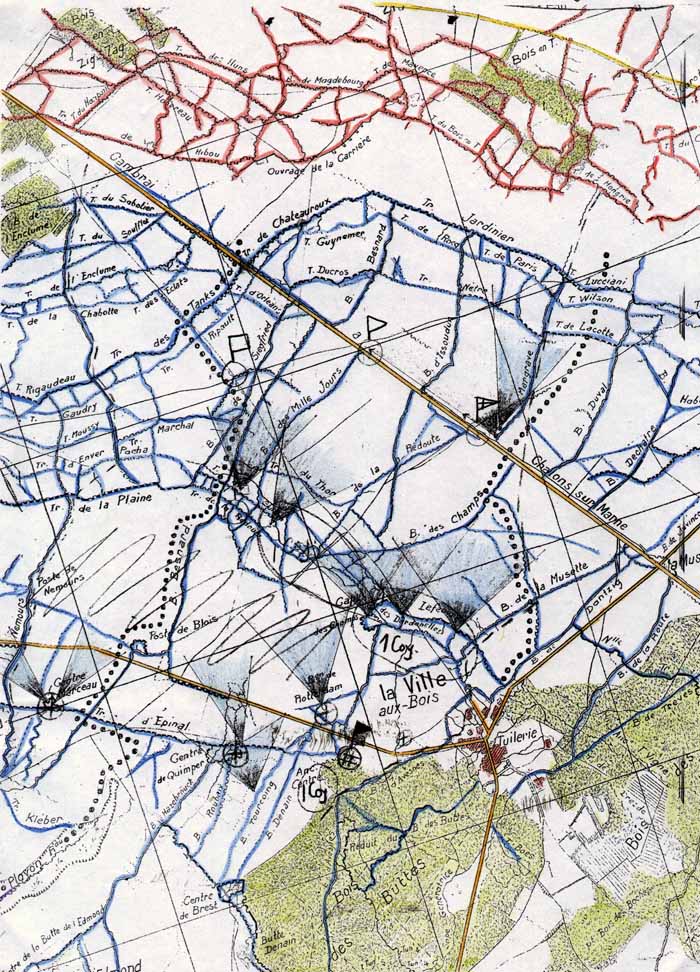
If would like to read the full story of the 4th NF in World War 1, then please select here
.
.
